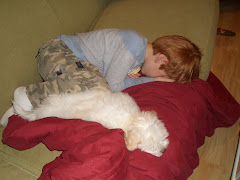
Dogs are den-dwelling animals and advocates claim that a crate can become a den substitute.
I am more than a little uncomfortable admitting this publicly.
Among virtually all dog-breeders and experts and many, many devoted, loving dog-owners, I would be considered a pariah—indulgent, wrong-headed—possibly even selfish. All because…
I don’t believe in crate-training.
Let me explain…
We began our life with Dog in a very naïve, yet civilized fashion. Because he is highly intelligent and was raised, by-the-book, with discipline (and love) by his Grandma Claudie, he was perfectly crate-trained from the very first night we brought him home at the tender age of 10 weeks.
And, although among the many reasons we fell in love with Sunny were his cute face and his playful disposition, I can’t deny that the tipping point was my husband. He was enamored by seeing Sunny crawl into his crate on command and go to sleep without a whimper of rebellion.
Perhaps my husband’s orderly, engineer self envisioned finally having some measure of control in our family, which skews towards the somewhat chaotic, messy, go-wth-the-flow nature of the matriarch—yours truly.
In our house, the crate thing lasted—oh, not at all. Since I was basically in charge of the dog and I am not by nature very rules-based, all his good training was wasted on me. (Except for the important stuff like potty-training, which I was very consistent about and Sunny learned quickly.)
The funny thing about a dog crate is that everyone (and I have had more people tell me this than I can count) says, “Oh, the dog loves it, he feels safe in there—it’s his little ‘den.’ Just like in the wild. It’s their nature.”
But the thing is, wild dogs can go in and out of their den as they please. It is not “their nature” to be locked up inside a little plastic box at the whim and convenience of some arbitrary humans.
Here’s another view on crate-training, from Steven Lindsay’s “Handbook of Applied Dog Behavior and Training”:
"Many advocates of long-term crate confinement claim that dogs are phylogenetically preadapted to live in a crate. These conclusions are based on various fallacious assumptions derived from inappropriate comparisons with the use of dens by wild canids and feral dogs.
In reality, a crate has far more in common with a trap (or grave) than it does with a den. Further, a den actually has far more in common with a home, the natural environment of a dog, providing access to communal indoor and outdoor living spaces via a two-way door. An obvious distinction between a den and a crate is physical entrapment, isolation, and inescapability.
While the den provides the mother with the seclusion and security that she needs to deliver and care for her young, it does not restrict her freedom of movement, as the crate does. Instead of providing a safe environ for her young, the crate serves the express purpose of separating the dog from social attachment objects.
After learning that the crate is inescapable, however, dogs appear to treat the crate in a paradoxical manner analogous to persons affected by the Stockholm syndrome; that is, they appear to form strong attachments with the crate, which becomes the place they identify as home."
I only just came across this as I was writing this blog post, but Yaw-Zah! This totally resonates with me!
When I got Dog home, no matter what I read or heard telling me otherwise, the crate felt too restraining--not right to me. And hypocritical. If you want to lock your dog up in a crate because you work all day and don’t want the dog chewing and peeing on your furniture, just say so, for Dog’s Sake. Don’t try to justify it by saying it's the dog's nature.
I wanted my dog to have free will. So, I figured we’d put the crate, door-open inside of an exercise pen with piddle pads all around. If Dog really did like the crate better and feel more comfortable there, he had the choice to go in or out. The first few hours we had him, whenever he would get too tired, he would happily crawl into the crate.

With the door open and freedom beckoning, this didn't last long. An anecdotal study of the attraction of freedom vs. safety. With a subject of one, the conclusion was clear.
Dog soon discovered the diversity and richness of the world beyond the crate.
And we realized all the possibilities and consequences of “free will" in Dog terms.
(To be continued.)


No comments:
Post a Comment